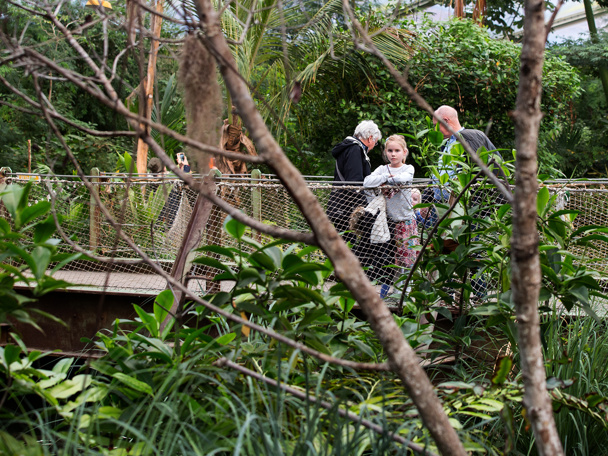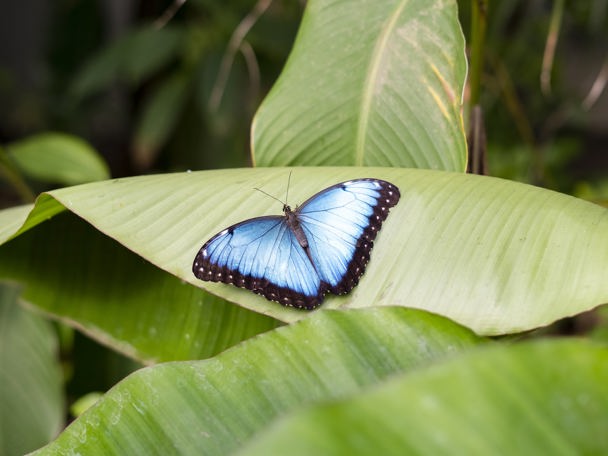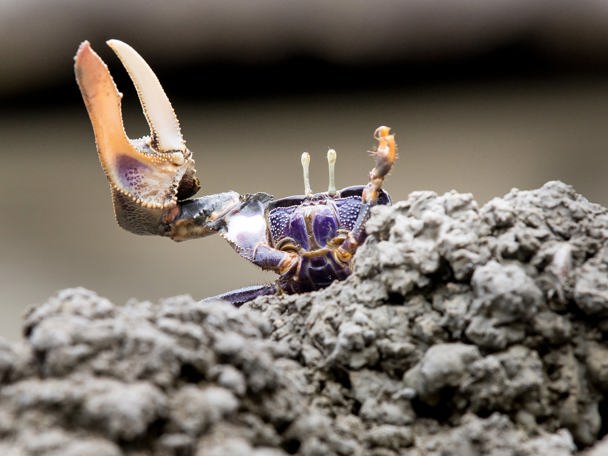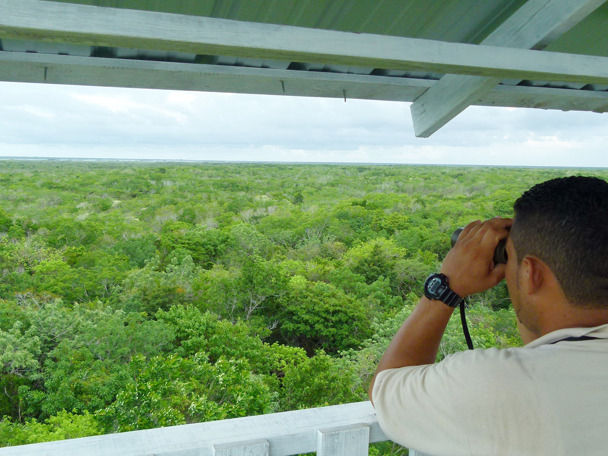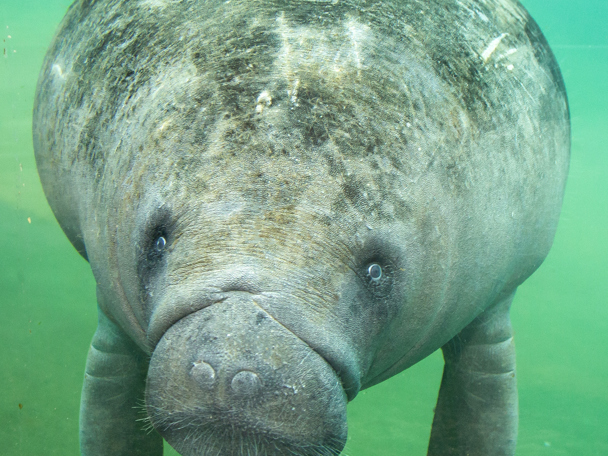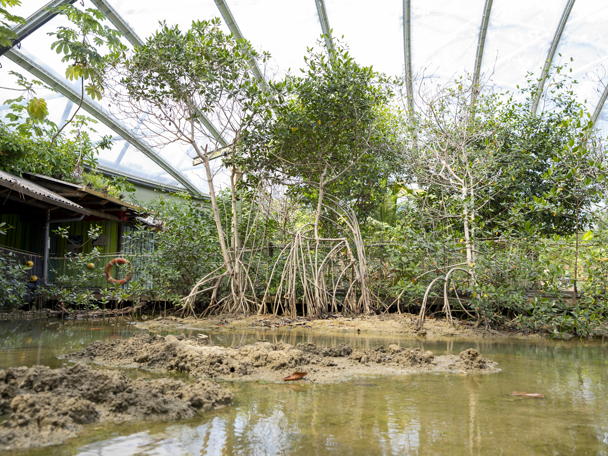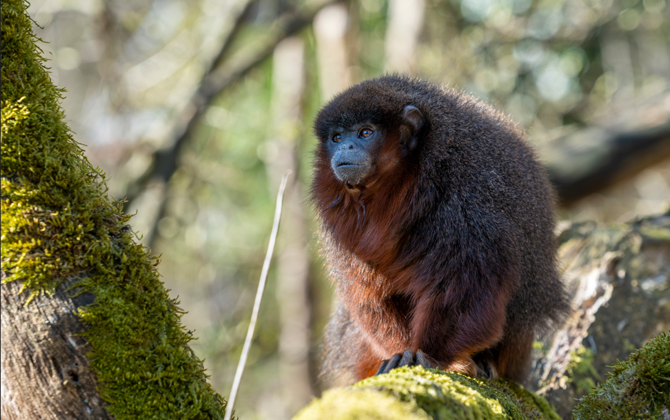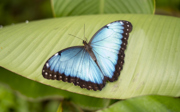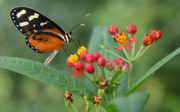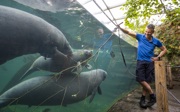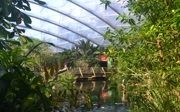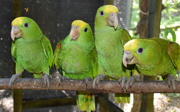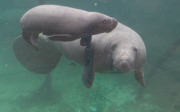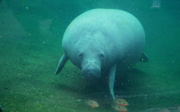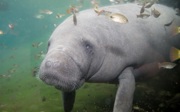The journey begins on a bridge through the mangrove forest upon entering Burgers' Mangrove. Few plant species can survive in this extremely salty climate, where living conditions shift with the tides. At low tide, the mudflats come alive! Fiddler crabs come out of hiding everywhere to collect food or impress females and rivals with their impressive claws.
Suddenly visitors find themselves face to face with the Caribbean manatees on the other side of a 12-metre-long, 1.8 metre-tall panoramic window. With any luck, the impressive mammals will swim right up to the window. In the tropical dry forest area, colourful butterfly species are everywhere, and a variety of birds species can be spotted. There is also a display box here, where newly hatched butterflies dry their wings before being released into the Mangrove by the zookeepers.
Burgers' Mangrove is based on the mangrove forests of the Central American country of Belize. Mangroves are sometimes called the ocean's nursery, as many fish species are born there before migrating once they reach adulthood. The abundant stilt roots provide safe, sheltered places for young fish to hide from danger. Mangroves are also a safe, sheltered breeding ground for many bird species. Lastly, mangroves are an excellent habitat for a variety of reptiles and crab species. The salty seawater retreats at low tide, flowing back into the mangrove abundantly at high tide. The fresh river water joins the sea at the mangrove, mixing to create brackish water.
Sadly, large sections of mangrove are disappearing worldwide. Burgers' Zoo is committed to protecting this fragile habitat. With Burgers' Mangrove, we hope to raise awareness among visitors. We have been protecting a nature reserve in Belize for over 30 years. The area now covers 400 square kilometres, over seven times bigger than De Hoge Veluwe National Park. The area comprises mangrove forest, tropical rainforest, tropical dry forest, and a coral reef just off the coast. Rangers frequently patrol the area and fight illegal logging and fishing. Tree species that were previously often felled illegally are raised in nurseries, and the larger seedlings are replanted in the forest. The rangers use night vision cameras to determine where shy animals such as the jaguar and white-lipped peccary live.
BelizeBurgers' Mangrove is home to Caribbean manatees, which have also parented offspring here. The large basin in which these mammals live is also thriving with various species of cichlid and some predatory fish to keep the population in balance, such as longnose gar. Dozens of fiddler crabs live on the mudflats which are mostly dry at low tide, and horseshoe crabs can be spotted in the adjoining water. The Mangrove in Arnhem also boasts a variety of birds species, including blue-black grassquits, northern cardinals, honeycreepers, and specific dove species. Basilisks represent the reptiles in this ecosystem, and the dozens of colourful butterfly species in the tropical dry forest area are fascinating to watch!
Mangroves are extreme habitats for plants; they are found along tropical coasts, where the high amount of sunlight can burn leaves, and where the plants' roots are rinsed with salt water at every high tide. Worldwide, only 110 plant species can survive in mangroves—of the roughly 380,000 plant species in existence! The most common tree species in mangroves worldwide—the red mangrove—has remarkable stilt roots. They help the plant stand firmly in the mud while lifting the rest of the plants away from the regular salt bath. Typical for mangrove plants are the leathery, hard leaves that protect the plant against excessive sunshine.
7 November 2025
16 Jun 2025
3 Apr 2025
19 Sep 2023
8 Dec 2022
20 Sep 2022
12 Jul 2022
27 May 2022
28 Feb 2022
30 Dec 2021
16 Dec 2021
25 Nov 2021
